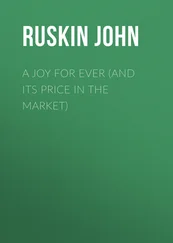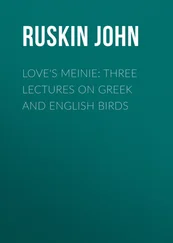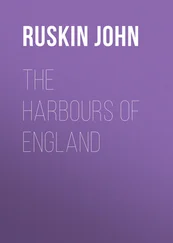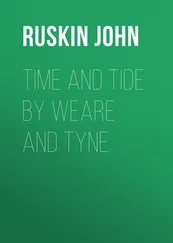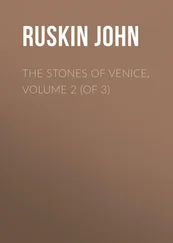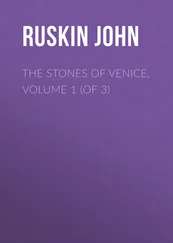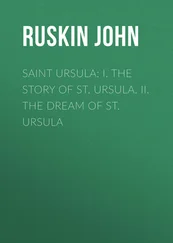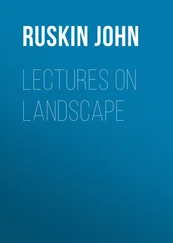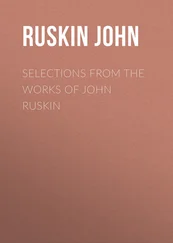John Ruskin - Proserpina, Volume 2
Здесь есть возможность читать онлайн «John Ruskin - Proserpina, Volume 2» — ознакомительный отрывок электронной книги совершенно бесплатно, а после прочтения отрывка купить полную версию. В некоторых случаях можно слушать аудио, скачать через торрент в формате fb2 и присутствует краткое содержание. Жанр: foreign_antique, Биология, literature_19, foreign_edu, на английском языке. Описание произведения, (предисловие) а так же отзывы посетителей доступны на портале библиотеки ЛибКат.
- Название:Proserpina, Volume 2
- Автор:
- Жанр:
- Год:неизвестен
- ISBN:нет данных
- Рейтинг книги:5 / 5. Голосов: 1
-
Избранное:Добавить в избранное
- Отзывы:
-
Ваша оценка:
- 100
- 1
- 2
- 3
- 4
- 5
Proserpina, Volume 2: краткое содержание, описание и аннотация
Предлагаем к чтению аннотацию, описание, краткое содержание или предисловие (зависит от того, что написал сам автор книги «Proserpina, Volume 2»). Если вы не нашли необходимую информацию о книге — напишите в комментариях, мы постараемся отыскать её.
Proserpina, Volume 2 — читать онлайн ознакомительный отрывок
Ниже представлен текст книги, разбитый по страницам. Система сохранения места последней прочитанной страницы, позволяет с удобством читать онлайн бесплатно книгу «Proserpina, Volume 2», без необходимости каждый раз заново искать на чём Вы остановились. Поставьте закладку, и сможете в любой момент перейти на страницу, на которой закончили чтение.
Интервал:
Закладка:
"And the recreation of the minde which is taken heereby cannot be but verie good and honest, for they admonish and stir up a man to that which is comely and honest. For flowers, through their beautie, varietie of colour, and exquisite forme, do bring to a liberall and gentle manly minde the remembrance of honestie, comeliness, and all kinds of vertues. For it would be an unseemely and filthie thing, as a certain wise man saith, for him that doth looke upon and handle faire and beautiful things, and who frequenteth and is conversant in faire and beautiful places, to have his mind not faire, but filthie and deformed."
10. Thus Gerarde, in the close of his introductory notice of the violet,—speaking of things, (honesty, comeliness, and the like,) scarcely now recognized as desirable in the realm of England; but having previously observed that violets are useful for the making of garlands for the head, and posies to smell to;—in which last function I observe they are still pleasing to the British public: and I found the children here, only the other day, munching a confection of candied violet leaves. What pleasure the flower can still give us, uncandied, and unbound, but in its own place and life, I will try to trace through some of its constant laws.
11. And first, let us be clear that the native colour of the violet is violet; and that the white and yellow kinds, though pretty in their place and way, are not to be thought of in generally meditating the flower's quality or power. A white violet is to black ones what a black man is to white ones; and the yellow varieties are, I believe, properly pansies, and belong also to wild districts for the most part; but the true violet, which I have just now called 'black,' with Gerarde, "the blacke or purple violet, hath a great prerogative above others," and all the nobler species of the pansy itself are of full purple, inclining, however, in the ordinary wild violet to blue. In the 'Laws of Fésole,' chap, vii., §§ 20, 21, I have made this dark pansy the representative of purple pure; the viola odorata, of the link between that full purple and blue; and the heath-blossom of the link between that full purple and red. The reader will do well, as much as may be possible to him, to associate his study of botany, as indeed all other studies of visible things, with that of painting: but he must remember that he cannot know what violet colour really is, unless he watch the flower in its early growth. It becomes dim in age, and dark when it is gathered—at least, when it is tied in bunches;—but I am under the impression that the colour actually deadens also,—at all events, no other single flower of the same quiet colour lights up the ground near it as a violet will. The bright hounds-tongue looks merely like a spot of bright paint; but a young violet glows like painted glass.
12. Which, when you have once well noticed, the two lines of Milton and Shakspeare which seem opposed, will both become clear to you. The said lines are dragged from hand to hand along their pages of pilfered quotations by the hack botanists,—who probably never saw them , nor anything else, in Shakspeare or Milton in their lives,—till even in reading them where they rightly come, you can scarcely recover their fresh meaning: but none of the botanists ever think of asking why Perdita calls the violet 'dim,' and Milton 'glowing.'
Perdita, indeed, calls it dim, at that moment, in thinking of her own love, and the hidden passion of it, unspeakable; nor is Milton without some purpose of using it as an emblem of love, mourning,—but, in both cases, the subdued and quiet hue of the flower as an actual tint of colour, and the strange force and life of it as a part of light, are felt to their uttermost.
And observe, also, that both, of the poets contrast the violet, in its softness, with the intense marking of the pansy. Milton makes the opposition directly–
"the pansy, freaked with jet,
The glowing violet."
Shakspeare shows yet stronger sense of the difference, in the "purple with Love's wound" of the pansy, while the violet is sweet with Love's hidden life, and sweeter than the lids of Juno's eyes.
Whereupon, we may perhaps consider with ourselves a little, what the difference is between a violet and a pansy?
13. Is, I say, and was, and is to come,—in spite of florists, who try to make pansies round, instead of pentagonal; and of the wise classifying people, who say that violets and pansies are the same thing—and that neither of them are of much interest! As, for instance, Dr. Lindley in his 'Ladies' Botany.'
"Violets—sweet Violets, and Pansies, or Heartsease, represent a small family, with the structure of which you should be familiar; more, however, for the sake of its singularity than for its extent or importance, for the family is a very small one, and there are but few species belonging to it in which much interest is taken. As the parts of the Heartsease are larger than those of the Violet, let us select the former in preference for the subject of our study." Whereupon we plunge instantly into the usual account of things with horns and tails. "The stamens are five in number—two of them, which are in front of the others, are hidden within the horn of the front petal," etc., etc., etc. (Note in passing, by the ' horn of the front ' petal he means the ' spur of the bottom ' one, which indeed does stand in front of the rest,—but if therefore it is to be called the front petal—which is the back one?) You may find in the next paragraph description of a "singular conformation," and the interesting conclusion that "no one has yet discovered for what purpose this singular conformation was provided." But you will not, in the entire article, find the least attempt to tell you the difference between a violet and a pansy!—except in one statement—and that false! "The sweet violet will have no rival among flowers, if we merely seek for delicate fragrance; but her sister, the heartsease, who is destitute of all sweetness, far surpasses her in rich dresses and gaudy !!! colours." The heartsease is not without sweetness. There are sweet pansies scented, and dog pansies unscented—as there are sweet violets scented, and dog violets unscented. What is the real difference?
14. I turn to another scientific gentleman— more scientific in form indeed, Mr. Grindon,—and find, for another interesting phenomenon in the violet, that it sometimes produces flowers without any petals! and in the pansy, that "the flowers turn towards the sun, and when many are open at once, present a droll appearance, looking like a number of faces all on the 'qui vive.'" But nothing of the difference between them, except something about 'stipules,' of which "it is important to observe that the leaves should be taken from the middle of the stem—those above and below being variable."
I observe, however, that Mr. Grindon has arranged his violets under the letter A, and his pansies under the letter B, and that something may be really made out of him, with an hour or two's work. I am content, however, at present, with his simplifying assurance that of violet and pansy together, "six species grow wild in Britain—or, as some believe, only four—while the analysts run the number up to fifteen."
15. Next I try Loudon's Cyclopædia, which, through all its 700 pages, is equally silent on the business; and next, Mr. Baxter's 'British Flowering Plants,' in the index of which I find neither Pansy nor Heartsease, and only the 'Calathian' Violet, (where on earth is Calathia?) which proves, on turning it up, to be a Gentian.
16. At last, I take my Figuier, (but what should I do if I only knew English?) and find this much of clue to the matter:—
Читать дальшеИнтервал:
Закладка:
Похожие книги на «Proserpina, Volume 2»
Представляем Вашему вниманию похожие книги на «Proserpina, Volume 2» списком для выбора. Мы отобрали схожую по названию и смыслу литературу в надежде предоставить читателям больше вариантов отыскать новые, интересные, ещё непрочитанные произведения.
Обсуждение, отзывы о книге «Proserpina, Volume 2» и просто собственные мнения читателей. Оставьте ваши комментарии, напишите, что Вы думаете о произведении, его смысле или главных героях. Укажите что конкретно понравилось, а что нет, и почему Вы так считаете.

